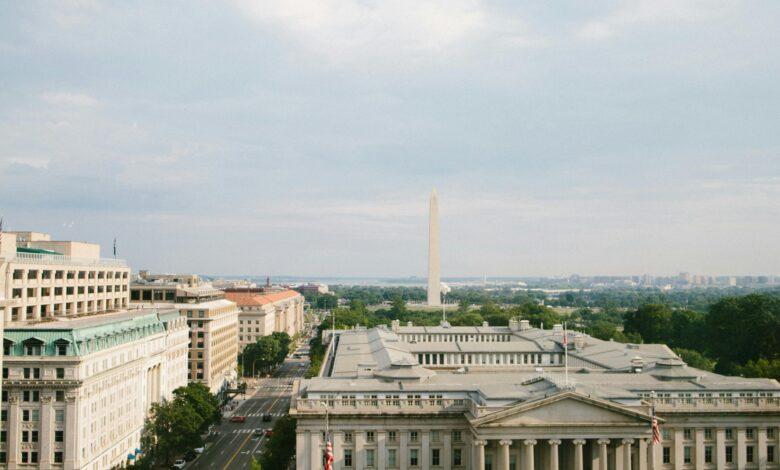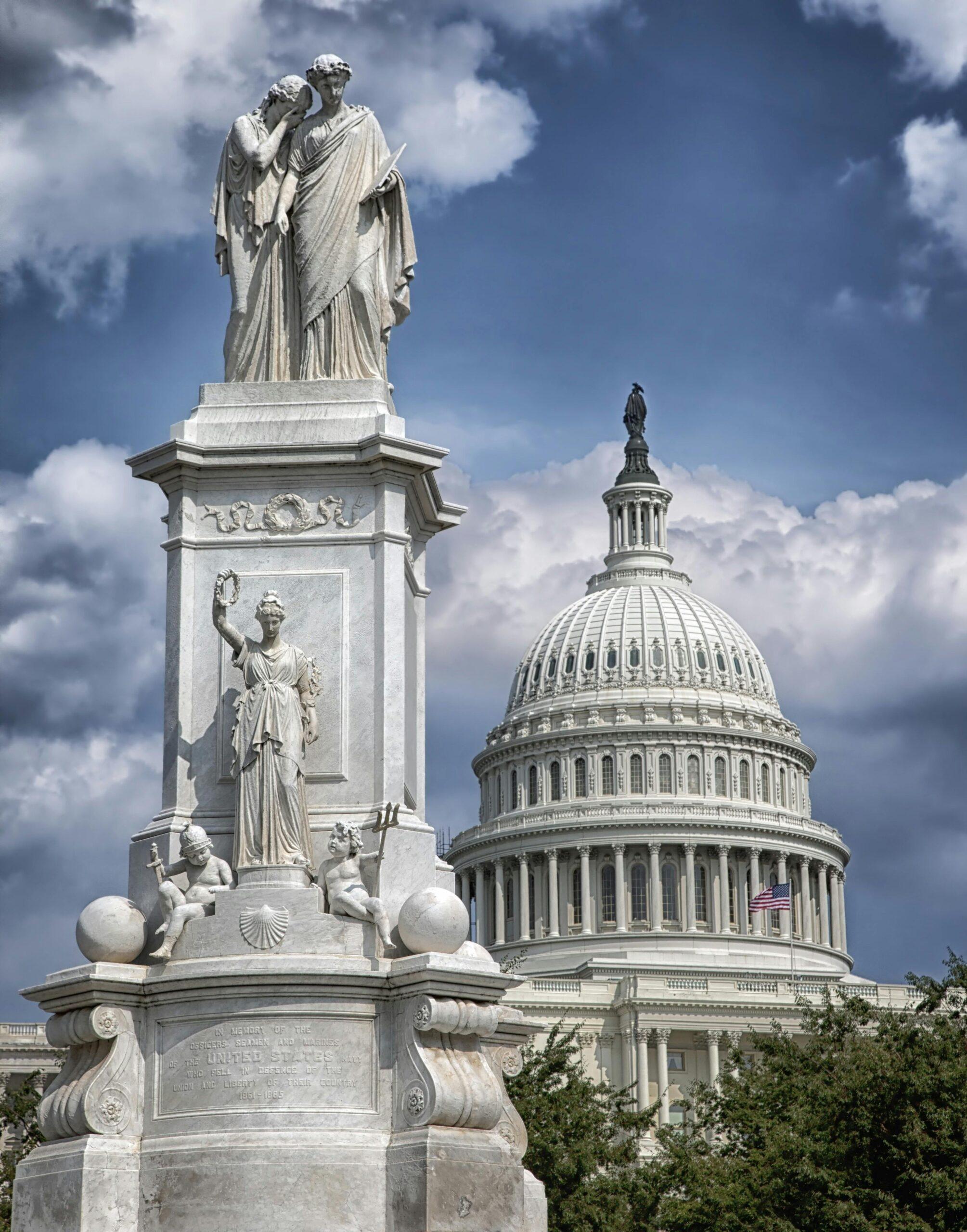Historical Landmarks: Exploring Washington D.C.’s Monuments and Museums 🏛️🎨
Discover the Rich History and Culture of the Nation's Capital through Iconic Landmarks

Introduction
Welcome to Washington D.C., the heart of American history and culture, where every corner tells a story of the nation’s past, present, and future. Join us on a journey through the hallowed halls of monuments and museums that grace the capital city, as we uncover the timeless treasures that define the American experience. From iconic landmarks on the National Mall to the world-renowned Smithsonian museums, prepare to embark on an enriching exploration of Washington D.C.’s historical and cultural landmarks.
The National Mall: Iconic Monuments of American History
The National Mall stands as a symbol of American history, democracy, and national identity. Stretching from the United States Capitol to the Potomac River, this expansive green space serves as a gathering place for national celebrations, protests, and commemorations.
Lincoln Memorial: A Tribute to Freedom and Equality
The Lincoln Memorial, dedicated in 1922, honors the 16th President of the United States, Abraham Lincoln. Designed by architect Henry Bacon, this iconic monument features a larger-than-life statue of Lincoln seated stoically within a neoclassical Greek temple. The memorial serves as a symbol of freedom and equality, commemorating Lincoln’s leadership during the Civil War and his pivotal role in abolishing slavery with the Emancipation Proclamation. Martin Luther King Jr.’s famous “I Have a Dream” speech was delivered from the steps of the Lincoln Memorial during the 1963 March on Washington for Jobs and Freedom, further solidifying its significance in the fight for civil rights.
Washington Monument: Towering Tribute to America’s First President
The Washington Monument, completed in 1884, stands as a towering tribute to George Washington, the founding father and first President of the United States. Designed by architect Robert Mills, this iconic obelisk reaches a height of 555 feet, making it one of the tallest stone structures in the world. The monument’s construction endured various challenges, including funding issues and the Civil War, before finally being completed. Today, visitors can ascend the monument to enjoy panoramic views of the National Mall and surrounding landmarks. The Washington Monument symbolizes the ideals of liberty, democracy, and the enduring legacy of America’s founding principles.
Vietnam Veterans Memorial: Healing and Remembrance
The Vietnam Veterans Memorial, dedicated in 1982, is a poignant tribute to the men and women who served and sacrificed during the Vietnam War. Designed by Maya Lin, a Yale University undergraduate at the time, the memorial consists of two black granite walls etched with the names of over 58,000 fallen soldiers. The memorial’s reflective surface allows visitors to see themselves alongside the names, creating a deeply personal and emotional experience. The Vietnam Veterans Memorial serves as a place of healing, remembrance, and reconciliation, allowing visitors to pay their respects and honor the bravery and sacrifice of those who served in one of America’s most controversial conflicts.
Smithsonian Institution: America’s Museum Capital
The Smithsonian Institution stands as a beacon of culture, knowledge, and history in the United States. Established in 1846, it comprises a vast network of museums, galleries, research centers, and educational facilities, making it the world’s largest museum, education, and research complex. Located primarily in Washington, D.C., the Smithsonian offers free admission to all its venues, welcoming millions of visitors each year.
National Air and Space Museum
The National Air and Space Museum is a testament to humanity’s fascination with flight and space exploration. It houses the largest collection of historic aircraft and spacecraft in the world, including the Wright brothers’ plane, the Apollo 11 command module, and the Space Shuttle Discovery. Visitors can explore the wonders of aviation and space travel through interactive exhibits, simulators, and immersive experiences.
National Museum of American History
The National Museum of American History provides a comprehensive overview of the nation’s past, celebrating its rich cultural heritage and technological advancements. From the Star-Spangled Banner and the First Ladies’ inaugural gowns to iconic artifacts like the Ruby Slippers from “The Wizard of Oz” and the original “Muppet” puppets, the museum offers insights into American identity, innovation, and resilience.
National Gallery of Art
The National Gallery of Art showcases an extensive collection of paintings, sculptures, decorative arts, and other masterpieces from around the world. With works spanning from the Middle Ages to the present day, the museum boasts renowned pieces by artists such as Leonardo da Vinci, Vincent van Gogh, and Claude Monet. Its two buildings, the West Building and the East Building, provide visitors with a diverse range of artistic experiences and perspectives.
Introduction to Museums in Washington D.C. Celebrating Cultural Diversity
Washington D.C. stands as a beacon of cultural diversity, housing a plethora of museums that showcase various facets of humanity’s rich tapestry. Among these institutions, the National Museum of African American History and Culture, the United States Holocaust Memorial Museum, and the International Spy Museum stand out as pillars of enlightenment and remembrance. Each museum offers visitors a unique perspective on historical events, societal struggles, and human resilience, fostering a deeper understanding of our shared past and present.
National Museum of African American History and Culture
The National Museum of African American History and Culture (NMAAHC) stands as a testament to the African American experience, from the horrors of slavery to the triumphs of the civil rights movement. Through its extensive collection of artifacts, interactive exhibits, and multimedia presentations, the museum chronicles the contributions, struggles, and achievements of African Americans throughout history. By exploring themes of resilience, resistance, and cultural heritage, the NMAAHC encourages visitors to confront the complexities of race and identity in America, promoting empathy and understanding across racial divides.
United States Holocaust Memorial Museum
The United States Holocaust Memorial Museum serves as a solemn reminder of one of the darkest chapters in human history. Through its poignant exhibitions, survivor testimonies, and educational programs, the museum honors the six million Jews and millions of other victims who perished in the Holocaust. By bearing witness to the atrocities committed by the Nazi regime, visitors confront the consequences of prejudice, discrimination, and unchecked hatred. The museum’s mission extends beyond remembrance, striving to inspire individuals to confront injustice, promote tolerance, and defend human rights in their own communities.
International Spy Museum
The International Spy Museum offers visitors a captivating journey into the shadowy world of espionage and intrigue. Through its vast collection of spy gadgets, clandestine missions, and real-life spy stories, the museum illuminates the often-hidden forces shaping world events. By exploring the art of espionage, visitors gain insights into the complexities of international relations, the importance of intelligence gathering, and the ethical dilemmas faced by spies and intelligence operatives. In an era marked by geopolitical tensions and cyber warfare, the museum’s exhibits encourage critical thinking about the role of espionage in shaping the course of history.

Presidential Sites: Tracing the Footsteps of Leaders
Overview of presidential landmarks such as the White House, U.S. Capitol, and Mount Vernon
Presidential landmarks serve as poignant reminders of the nation’s history and its leaders’ legacies. The White House stands as an iconic symbol of American governance, serving as the official residence and workplace of every U.S. president since John Adams. Its neoclassical architecture and rich history make it a must-visit for those interested in the country’s political heritage. Similarly, the U.S. Capitol, with its majestic dome and storied halls, is not only the seat of the United States Congress but also a monument to the nation’s democratic ideals. Visitors can explore its chambers, galleries, and Rotunda, where historical events have unfolded and pivotal decisions have been made. Mount Vernon, the plantation home of George Washington, offers insight into the personal life of the first president and the everyday realities of 18th-century America. Each of these landmarks provides a unique perspective on the presidency and its role in shaping the nation.
Highlighting the historical significance of these sites in shaping American democracy
Presidential sites hold significant historical importance in shaping the trajectory of American democracy. The White House, as the executive mansion, has been witness to countless crucial moments in the nation’s history, from signing landmark legislation to hosting foreign dignitaries. Its walls echo with the voices of presidents who have grappled with the nation’s most pressing challenges and celebrated its triumphs. Similarly, the U.S. Capitol stands as a symbol of the country’s democratic principles, where representatives from across the nation convene to debate and legislate on behalf of the American people. Mount Vernon, while primarily associated with George Washington, represents the ideals of leadership, sacrifice, and civic duty that have guided the nation’s presidents throughout its history. By visiting these sites, visitors can gain a deeper understanding of the foundations of American democracy and the enduring values that continue to shape it today.
Insight into the visitor experience and tours available at each location
Visiting presidential landmarks offers an immersive experience that allows visitors to connect with the past and gain insight into the lives of the nation’s leaders. At the White House, public tours provide a glimpse into the elegant rooms and corridors where presidents have lived and worked, although advanced booking and security clearances are required. The U.S. Capitol offers guided tours that showcase its architectural splendor and historical significance, including access to the Crypt, the National Statuary Hall, and the Capitol Rotunda. Mount Vernon welcomes visitors to explore the mansion, gardens, and estate at their own pace, with guided tours available to delve deeper into Washington’s life and legacy. Whether touring the halls of power or strolling through historic gardens, visitors to these presidential sites are sure to come away with a deeper appreciation for the individuals and institutions that have shaped American democracy.
FAQs
Q. What are some must-visit monuments in Washington D.C.?
A. Some must-visit monuments in Washington D.C. include the Lincoln Memorial, Washington Monument, Jefferson Memorial, Vietnam Veterans Memorial, and the Martin Luther King Jr. Memorial. Each offers a unique perspective on American history and culture.
Q. What can visitors expect at the Lincoln Memorial?
A. Visitors can expect to see the iconic statue of Abraham Lincoln seated solemnly, surrounded by inscriptions of his famous speeches, including the Gettysburg Address and his Second Inaugural Address. The memorial offers a powerful tribute to the 16th President of the United States.
Q. What is significant about the Washington Monument?
A. The Washington Monument stands as a tribute to George Washington, the first President of the United States. It’s an iconic symbol of the nation’s capital and offers breathtaking views of the city from its observation deck.
Q. What does the Jefferson Memorial commemorate?
A. The Jefferson Memorial commemorates Thomas Jefferson, one of the Founding Fathers and the principal author of the Declaration of Independence. Visitors can admire the neoclassical architecture and the statue of Jefferson inside.
Q. What is the Vietnam Veterans Memorial?
A. The Vietnam Veterans Memorial honors the men and women who served and sacrificed during the Vietnam War. Its design, featuring the names of those who died or went missing during the conflict, evokes a sense of reverence and reflection.
Q. What does the Martin Luther King Jr. Memorial represent?
A. The Martin Luther King Jr. Memorial pays tribute to the civil rights leader and his legacy of nonviolent activism. Visitors can see the imposing statue of King, surrounded by quotations from his speeches, emphasizing themes of justice, democracy, and hope.
Q. What are some notable museums to explore in Washington D.C.?
A. Some notable museums in Washington D.C. include the Smithsonian Institution museums, such as the National Air and Space Museum, the National Museum of American History, the National Gallery of Art, and the United States Holocaust Memorial Museum.
Q. What can visitors expect at the National Air and Space Museum?
A. Visitors can expect to explore the fascinating world of aviation and space exploration, with exhibits showcasing historic aircraft, spacecraft, and artifacts. Highlights include the Wright brothers’ plane, the Apollo 11 command module, and the Space Shuttle Discovery.
Q. What does the National Museum of American History showcase?
A. The National Museum of American History showcases the rich history and culture of the United States through exhibits on topics such as American innovation, democracy, and popular culture. Visitors can see iconic artifacts like the Star-Spangled Banner and the original “Star-Spangled Banner” lyrics.
Q. What does the National Gallery of Art offer to visitors?
A. The National Gallery of Art offers a vast collection of Western art from the Middle Ages to the present day. Visitors can admire works by renowned artists such as Leonardo da Vinci, Rembrandt, Vincent van Gogh, and Claude Monet.
Q. What is the focus of the United States Holocaust Memorial Museum?
A. The United States Holocaust Memorial Museum is dedicated to educating visitors about the history and consequences of the Holocaust. Through exhibitions, artifacts, and survivor testimonies, it seeks to promote understanding and prevent future acts of genocide.
Conclusion
As we conclude our journey through Washington D.C.’s monuments and museums, we reflect on the enduring legacy of America’s rich history and diverse cultural heritage. From the solemn majesty of the Lincoln Memorial to the vibrant exhibits of the Smithsonian museums, each landmark we’ve explored serves as a testament to the values and aspirations that unite us as a nation. As visitors and stewards of these hallowed spaces, may we continue to cherish and preserve these timeless treasures for generations to come, ensuring that the spirit of Washington D.C. remains a beacon of inspiration and enlightenment for all.
UP NEXT
https://touristeyes.com/traveling-to-italy/





Facebook Comments